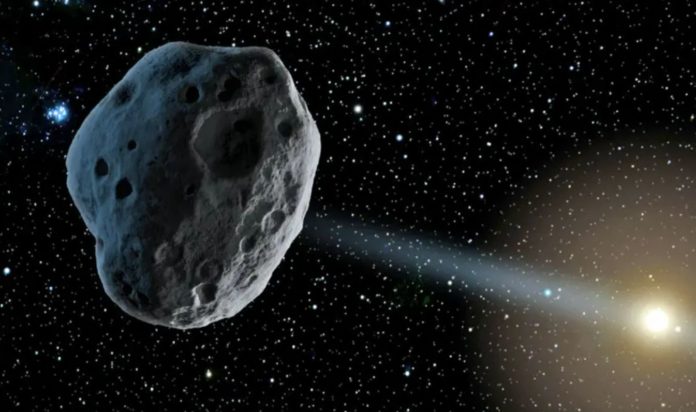This big space rock, designated 418135 (2008 AG33), has a diameter of up to 780 meters and is scheduled to pass by the Earth on April 28.
According to NASA’s asteroid tracker, a giant asteroid twice the size of the Empire State Building will pass Earth this week at a distance quite close to us on a cosmic scale.
Asteroid 418135 (2008 AG33) size?
This large space rock, classified 418135 (2008 AG33), could have a diameter of up to 780 meters. That’s more than twice the height of New York City’s famed skyscraper, the Empire State Building, which stands 381 meters tall from base to roof.
The asteroid will travel by the Earth at a speed of roughly 10.39 kilometers per second on April 28 at 2:46 a.m. UTC, or 10:46 p.m. EDT on April 27.
Will the asteroid collide with the Earth?
NASA estimates that 418135 (2008 AG33) will travel past the Earth at a distance of 3.24 million kilometers. In comparison, the Moon orbits the Earth at a distance of roughly 384,000 kilometers, thus this is a significant distance, yet it is still quite close to the Earth on a cosmic scale.
It’s also unsurprising that it’s travelling so near to the Earth. This asteroid is classified as an Apollo-class asteroid, which means that its orbit around the Sun intersects with Earth’s.
Still, it presents no threat to mankind right now, confirming NASA’s prediction that the Earth would not be hit by a cataclysmic asteroid within the next century.
What would happen if such an asteroid collided with Earth?
It’s a good thing that 418135 (2008 AG33) won’t collide with Earth because the result would almost probably be devastating.
An asteroid of this magnitude has the potential to destroy entire continents and inflict major catastrophes.
Asteroid impacts are a serious threat to the earth because they have the capacity to unleash havoc unmatched by other natural disasters, and civilization has yet to devise a mechanism to avert them. However, this is a topic that professionals all around the world are debating. NASA’s Double Asteroid Redirection Test (DART) Mission is one of the most promising proposals. This project, which has been launched, aims to fly into an asteroid using a small specially constructed spacecraft to test if it can slightly alter its trajectory. To put it another way, punching an asteroid to get it to go away.
The mission’s findings may alter the game in terms of Earth’s planetary defense.
Image Credit: Getty
You were reading: NASA detects a massive asteroid that will approach Earth on April 28 – how dangerous can it be?
